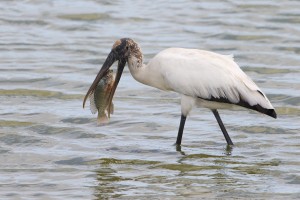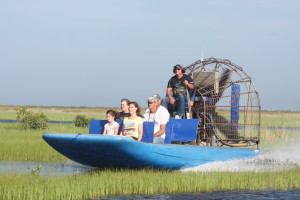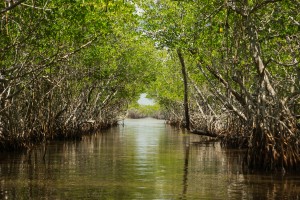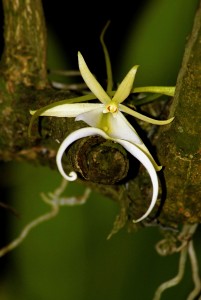 The Everglades needs water to survive; it’s a water-based ecosystem made up of sawgrass marshes, waterways, prairies, forested uplands, and ponds, including Paurotis Pond. One reason the area needs water so badly is because it’s home to an abundance of plants, animals, and marine life. Not only does water give the plants and animals sustenance, it gives them a home.
The Everglades needs water to survive; it’s a water-based ecosystem made up of sawgrass marshes, waterways, prairies, forested uplands, and ponds, including Paurotis Pond. One reason the area needs water so badly is because it’s home to an abundance of plants, animals, and marine life. Not only does water give the plants and animals sustenance, it gives them a home.
One of these “homes” is Paurotis Pond. The pond is a well-known nesting site of a variety of birds. The pond is situated 24 miles from the main Everglades park entrance in Homestead, Fl. The pond gets its name from the Paurotis Palms, a plant with green fan-shapes leaves that is native to the Everglades.
The National Park Service’s mission is to protect and preserve the landscape of the Everglades, so each year, the park
Every year, the Park closes the Pond area to protect nesting birds, including the Wood Storks, from any human disturbances. For instance, in January 2015, the Park closed Paurotis Pond for the Roseate Spoonbills’ nesting season. Pond closures vary in dates and times every year. The closures are dependent on birds’ behaviors. The Wood Stork was once an endangered species, but thanks to the efforts of the U.S. Fish and Wildlife Service, the species’ status was downgraded to “threatened.” This success is attributed to nearly 30 years of conversation and preservation efforts. In the last few years, Paurotis Pond has been a nesting site for about 400 pairs of Wood Storks.
Bird species that nest at Paurotis Pond, include: Great Egrets, Great Blue Herons, White Ibis, Roseate Spoonbills, Snowy Egrets, Tri-colored Herons, Black-Crowned Night Herons, Anhinga, and Little Blue Herons.
Just like people who flock to Florida for the winter, these birds fly down to Paurotis Pond during the dry season to prepare their nest-building sites. The birds form nesting colonies comprised of hundreds to thousands of birds. In this season, birds gather around permanent bodies of water, like Paurotis Pond, which makes bird-watching easy. The best birding season in the Everglades is from December to March. January and February are the best months to check out the birds at Paurotis Pond, if it has not been closed off for nesting. However, bird watching from the Pond’s parking area usually remains open. Not only is the pond a popular bird-watching site, but visitors can access the area to fish and canoe, as well.
Explore the Everglades
The Everglades is full of beautiful birds and waters for your viewing pleasure. Since it’s the winter season, now is the best time to catch birds nesting in the area’s waters. To make the most of your Everglades visit, take an airboat ride with Captain Mitch’s Everglades Airboat Tours. To schedule your ride, call Captain Mitch’s at 239-695-3377.
 Airboats are an iconic sight to see in the Everglades. The thought of going on airboat tour adventure can be exciting. It’s fun to think about the seemingly endless acres of swampland the boat will travel through and all the plant life and wildlife that could be spotted during a trip. This is your chance to be in the water with some ‘gators! However, the thought of going on an airboat tour can also be nerve raking, because accidents can happen.
Airboats are an iconic sight to see in the Everglades. The thought of going on airboat tour adventure can be exciting. It’s fun to think about the seemingly endless acres of swampland the boat will travel through and all the plant life and wildlife that could be spotted during a trip. This is your chance to be in the water with some ‘gators! However, the thought of going on an airboat tour can also be nerve raking, because accidents can happen. Have you ever seen a mangrove forest? They’re enchanting. Branches and roots all intertwined, lining waterways – they look like something out of a fantasy. Across the entire state of Florida, there are 469,000 acres of mangrove forests.
Have you ever seen a mangrove forest? They’re enchanting. Branches and roots all intertwined, lining waterways – they look like something out of a fantasy. Across the entire state of Florida, there are 469,000 acres of mangrove forests. Orchids are quite an exotic flower, so it’s no surprise that they can be found in one of the most mystical places in the world: The Everglades. Seeing these Everglades orchids is like finding beauty in an unexpected place, since the area widely known for its green and swampy colorings. According to the National Park Service, the diversity of orchids in the Everglades is higher than any other National Park in the United States.
Orchids are quite an exotic flower, so it’s no surprise that they can be found in one of the most mystical places in the world: The Everglades. Seeing these Everglades orchids is like finding beauty in an unexpected place, since the area widely known for its green and swampy colorings. According to the National Park Service, the diversity of orchids in the Everglades is higher than any other National Park in the United States.





